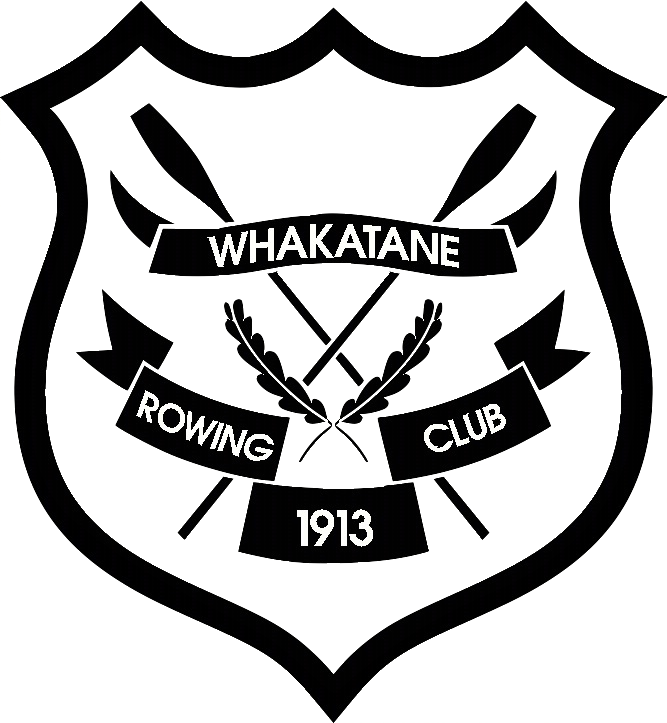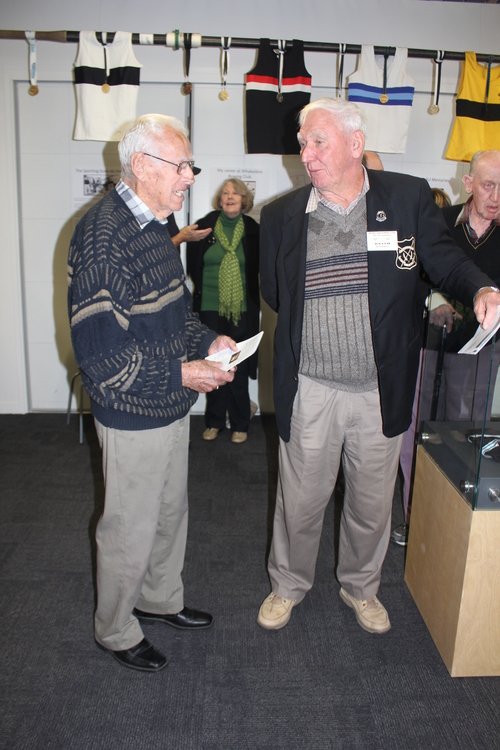Interview Series - Keith Bowering
When Cyril Molesworth told his good friend Bill Stevenson the club was considering the possibility of staging a regatta on the Whakatane River, Bill promptly gave a donation of $1,000 and a guarantee to underwrite any losses the enterprise incurred. A separate committee was formed called “The Whakatane Rowing Club Regatta and Carnival Committee” with the likes of George Henry, Bill Stuart, Les Stewart, Keith Bowering, Peter Seebeck etc. and they went ahead.”
— Keith Bowering
How did you start rowing?
I had started work and joined a maiden four crew of Cal O’Rourke, Mac Brown, Me and Murray Whitaker
Who was your 1st coach?
Geoff Moore and Bert Norman were there but we pretty much taught each other to row by trial and error. We rowed out of the old shed which stood precariously perched out over the water just on the army hall side of the bridge over the Waiewe Stream about opposite the front door of the Regional Council #2 building. No stop banks back then but very conveniently a short trek thru the playground opposite took you to the Commercial Hotel premises.
What was your BEST race?
The club went to the Ngarawahia regatta one year and we made almost a clean sweep of every race we were entered in-probably the equivalent of the WRC winning the Dewar shield at the Blue Lake regatta this season. The annual Ngaruawahia regatta was a real carnival event with wood chopping events water melons galore and all the fun of the fair. In the early days whole trainloads of people and boats would make the journey down from Auckland just to take part. There was a very tricky finish to the course where you had to row across the mouth of the mighty Waikato into the Waipa river and if you misjudged the current your lead disappeared in a flash.
What was your WORST race?
As we all know rowing on any harbour is always tricky when the wind gets up. We were at a regatta at Petone on Wellington Harbour and even though we had lashed splashboards under the riggers to keep the worst of the water out it was still coming in faster than it was going out. In the end all the crews had to make for the shore,get the boats out of the water and walk them back along the motorway to Petone. It must have looked strange to the passing motorists and a hell of a tiring exercise for the rowers.
You were a long time committee member of the club as CLUB CAPTAIN and a number of other positions-tell us about some of the things you remember about those years?
The club was very fortunate to have the whole town supporting our rowers all the way. Harry Warren while he was Mayor would call a coffee meeting of the towns leaders and somehow convince them they should contribute to the fundraising efforts to send rowers overseas or buy them boats so they could compete on a level playing field. Bill Henderson ran a very successful contracting firm and was very generous with employing some of the rowers that arrived from out of town-his only stipulation that they had to make sure they turned up on payday to collect their wages. He often underwrote the fundraising efforts with a monetary guarantee which he often said he hoped would never be called upon as he never had any cash.
Others like Sel Cave, Norman Patterson, the Bridger family, Rex Morpeth, Sam Carter and many others were great supporters over the years.
What about some of the early regattas-how were they run?
When Cyril Molesworth told his good friend Bill Stevenson the club was considering the possibility of staging a regatta on the Whakatane River, Bill promptly gave a donation of $1,000 and a guarantee to underwrite any losses the enterprise incurred. A separate committee was formed called “The Whakatane Rowing Club Regatta and Carnival Committee” with the likes of George Henry, Bill Stuart, Les Stewart, Keith Bowering, Peter Seebeck etc. and they went ahead. Besides rowing there was a “Miss Whakatane Beauty Contest” and June Bowering made the sashes for each years winner.
JD Rivett also staged a cards competition and there were all sorts of other entertainments. The date of boxing day seemed a little odd when you think about it but because the rowers were coming such a long way from Auckland and Waikato they were able to have Xmas dinner at home then travel down and arrive on Xmas eve and bunk down at the Army Hall. We spent most of Xmas day putting up big sheets of reinforcing steel to cover up the walkways etc so we could charge an entry fee to spectators. We then spent hours filling paliasses with hay to go on the stretcher beds we had acquired to provide beds for the visiting rowers in the Army Hall-what a job! . The rowers competed on Boxing Day and then had the next day to travel home ready for work the following day. We had huge spectator crowds at the regatta and many of the rowers talked about how much they enjoyed the regatta years later when the venue and date had to be shifted to Lake Matahina with a mid-january date.
In the 70s there was a separate REGATTA COMMITTEE that ran the club regattas at first on the river with the finish at the Army Hall and then up at Lake Matahina-tell us about those days?
Brian Slipper was the driving force with you Dave Smith, Les Stewart, Peter Seebeck, Keith Bowering, Brian Morpeth. What events stopped rowing on the river and then years later finished our days at Lake Matahina and the move on to the Blue Lake.
The Whakatane River was silting up and we always had a problem with the timing of the tides. Boxing Day was always fixed so rowing a full days programme became a nightmare when the tide went out. Entries were getting bigger and having 3 or 4 eights charging downstream with the tide going out became very difficult. It was a shame to call a halt to the regatta in town as it was so popular with rowers and the public but we could see a move had to be made. Lake Matahina presented a perfect rowing course on the water but the road in and the lack of a decent sized beach and area to store the boats caused all sorts of problems. It was only the sheer perseverance from Brian Slipper who did not understand the phrase ”it can’t be done” that kept us going. Brian spent countless hours up at the lake working on the course and on land –often arriving back home drenching wet having fallen out of his boat into the lake.
Tell us how you came to get the Army Engineers to carry out an exercise on the regatta course at Lake Matahina……?
The Army Engineers brought all their heavy machinery down and created terraces, wider roads and tracks and some good flat areas where we were able to build a garage to store our gear and use as a catering centre to provide food for the hungry rowers and spectators. Brian Slipper and I helped provide the meals to the engineers who stayed overnight in the Army Hall and travelled out to the Lake each day for work. The work they did greatly improved the layout of the area we used and made the regatta a great success. The event that ended our stay there was the big 1987 earthquake which resulted in the access road just completely slipping into the lake and cutting off our access to the park area we had created. We then moved the regatta to the Blue Lake as a back-to-back event with the Rotorua Rowing Club as it is to this day.
Tell us a bit about your family?
My brothers Jack , Peter and Noel all rowed for the club and June’s brother Gordon Angus did his time as an electrician at Whakatane Radio & Electrical and learnt to row at the Whakatane Club. He then moved with his parents to Auckland and while there joined the West End Rowing Club and won a couple of redcoats in their eight. My granddaughter Stacey also rowed at school-she attended Cambridge College and while there rowed in their squad. She is now is an English teacher at Cambridge College and June and I are immensely proud of her.

